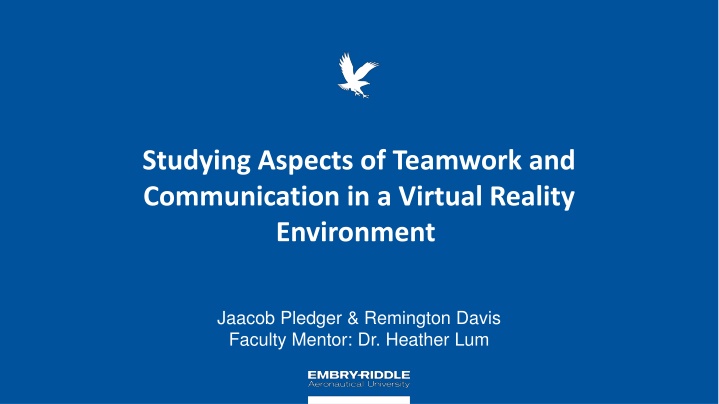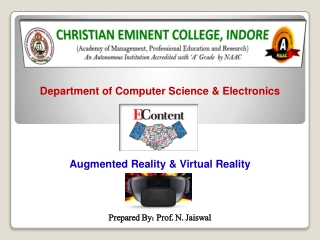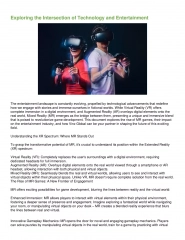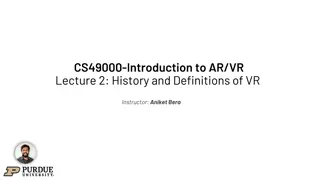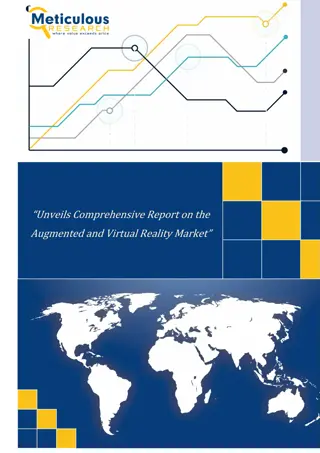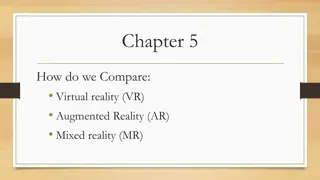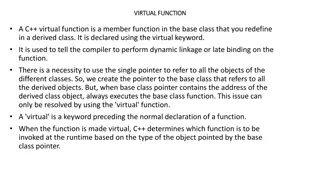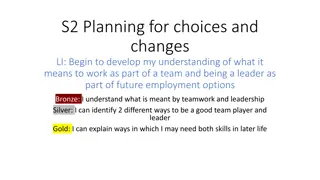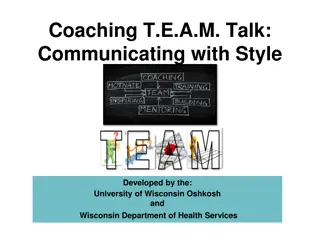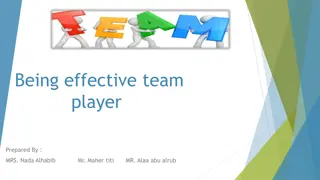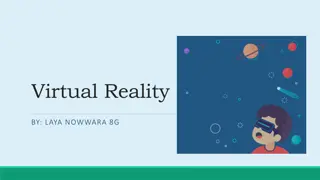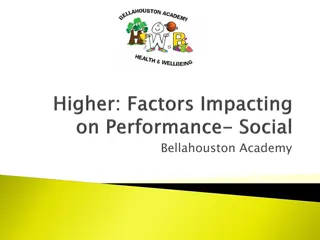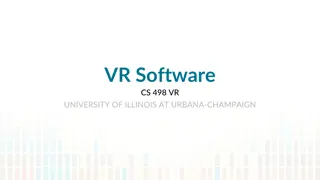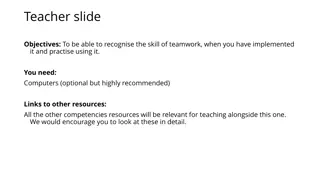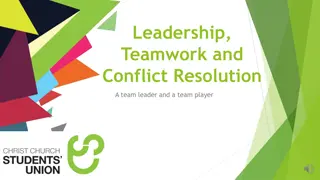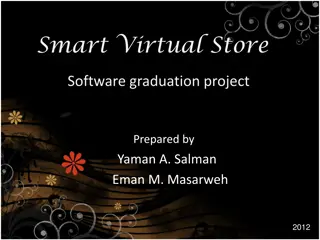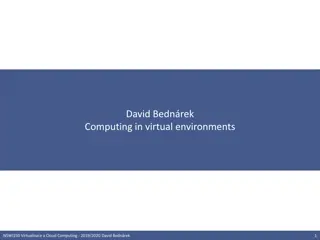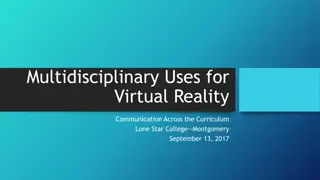Studying Aspects of Teamwork and Communication in a Virtual Reality Environment
This study delves into the dynamics of teamwork and communication within a virtual reality setting, shedding light on novel insights in this emerging field. Through in-depth analysis and observations, the researchers explore the nuances of collaboration in a digital environment, offering valuable contributions to the understanding of virtual team dynamics. The findings from this research provide critical perspectives for enhancing teamwork effectiveness and communication strategies for virtual teams.
Uploaded on Feb 27, 2025 | 2 Views
Download Presentation

Please find below an Image/Link to download the presentation.
The content on the website is provided AS IS for your information and personal use only. It may not be sold, licensed, or shared on other websites without obtaining consent from the author.If you encounter any issues during the download, it is possible that the publisher has removed the file from their server.
You are allowed to download the files provided on this website for personal or commercial use, subject to the condition that they are used lawfully. All files are the property of their respective owners.
The content on the website is provided AS IS for your information and personal use only. It may not be sold, licensed, or shared on other websites without obtaining consent from the author.
E N D
Presentation Transcript
Studying Aspects of Teamwork and Communication in a Virtual Reality Environment Jaacob Pledger & Remington Davis Faculty Mentor: Dr. Heather Lum
ABSTRACT This study aims to look at levels of teamwork and communication in virtual reality gaming systems. Researchers hope to analyze participants' communication during the study with the assistance of Virtual Reality. This will allow an experimental view of how subjects interact together when presented with a difficult situation that requires communication to be their top priority if they wish to succeed as a team. Researchers believe that this experiment will allow a better look into the human element of Virtual Reality. This data will prove useful for a variety of applications beyond this study including, but not limited to, consumer, military, and computer-based training simulations.
INTRODUCTION Teamwork and communication are present in most day-to-day activities Virtual Reality creates safe and effective training environments Use of Virtual Reality has strong applications in the medical field, military, and law enforcement Virtual Reality simulates the real world allowing a deeper understanding of human aspects. Workload Frustration Human Aspects in Research Communication Teamwork
METHOD The study involves a task involving three participants who will need to work together to complete a task. Specifically, three participants will play a game called Keep Talking and Nobody Explodes in which they will work as a team to diffuse an imaginary bomb. The goal is to work together and communicate as a team to defuse the bomb before the timer runs out and the bomb explodes. Researchers will collect data on the following. Participants put into the roles of bomb diffuser & defusal experts -Performance data on bomb defusal -Teamwork data using visual and audio clips. The bomb diffuser will describe the device seen in Virtual Reality -Speech content -Voice Pitch Experts navigate bomb defusal manual and attempt to give advice -Individual perceptions on workload & frustration -Individual perceptions on teamwork & performance Researchers document how the participants work together and communicate.
DISCUSSION The gaming experience is critical to the development and evolution of games as well as an avenue for studying aspects of human behavior. This study aims to look at levels of immersion in a virtual reality gaming system. Researchers hope to establish an experimental plan that will accurately and reliably measure user engagement in the gaming experience as well as emotional and physiological feedback. All these factors will give support for a variety of applications beyond this study including, but not limited to, consumer, military, and computer-based training simulations.
REFERENCES Ahlberg, G., Enochsson, L., Gallagher, A. G., Hedman, L., Hogman, C., McClusky III, D. A., & Arvidsson, D. (2007). Proficiency-based virtual reality training significantly reduces the error rate for residents during their first 10 laparoscopic cholecystectomies. The American journal of surgery, 193(6), 797-804. Seymour, N. (2002). Virtual Reality Training Improves Operating Room Performance. Annals of Surgery, 458-464.
